Reading Comprehension Teaching Resources
Explore printable reading comprehension worksheets, digital activities and more to teach reading comprehension strategies in your primary classroom. Created by teachers, for teachers, the teaching resources in this collection are aligned with the Australian curriculum and have undergone a careful review by a member of our expert teaching team.
You'll find editable versions to easily differentiate your instruction for individual students, plus various options to make your lesson planning easier this school year!
New to teaching this portion of the English curriculum or just looking for fresh and engaging ways to teach reading comprehension strategies? Read on for a primer from our teacher team, including a simple definition of reading comprehension, a look at different strategies students can use and more!
What Is Reading Comprehension?
We'll start at the beginning! Reading comprehension is a skill that's hard to overestimate in terms of its importance for early years students to develop.
Defined as the ability to understand and interpret written language, reading comprehension involves the process of decoding text, extracting meaning from it, and then integrating that meaning with prior knowledge and understanding.
Not only does comprehension comprise the ability to recognise and understand individual words, but it also involves the ability to recognise patterns and relationships within sentences and paragraphs, as well as the ability to make inferences and draw conclusions based on the information presented.
This isn't just important for reading, of course.
Comprehension is all about making meaning, and it includes various levels of understanding, including:
- Literal
- Inferential
- Evaluative
- Critical
If you think about it, we rely on these skills on a daily basis — when we notice the stooped shoulders of a partner as they walk in the door or when we listen to the weather report and observe how heavily laden the sky is with grey clouds.
To develop those same skills in a reading context, our students need to build a variety of language skills, such as vocabulary knowledge, grammar and syntax, as well as cognitive processes, such as attention, memory and critical thinking.
So how do they get there? Let's talk strategies!
What Are Reading Comprehension Strategies?
As you well know, students don't start off being able to comprehend every single thing they read. But teaching them strategies to understand better and retain information will allow them to go from recognising individual words to understanding a range of texts.
Some common reading comprehension strategies include:
- Previewing — This is the process of skimming the text before reading it in detail to get an overall sense of what it is about.
- Activating Prior Knowledge — Students can draw on existing knowledge and experience to help them understand new information, such as a new text.
- Making Connections — This strategy focuses on teaching students to make connections between a text and their own experiences and understandings. Research into the science of reading has shown enhanced comprehension when students are able to connect new information to information they already know.
- Questioning — In this comprehension strategy, students ask and answer questions to clarify the meaning of the text and deepen their understanding. When you centre questioning activities around the familiar open-ended prompts of who, what, when, where, how, why, and which, students assert their understanding and identify any gaps in their comprehension of the text. Questions can be posed by a teacher, by their peers, or by the students themselves.
- Visualising — Visualisation provides both teachers and students with another means to extend their exploration of a text and deepen understanding. This reading comprehension strategy asks students to create and describe an image in their mind, centered around a place, situation, or character in the text. Visualising has been proven in research to improve student recall! Using the five senses is a great way to scaffold student comprehension through visualising.
- Summarising — Summarising is a reading comprehension strategy that asks students to reflect on the text and communicate their understanding of it. A well-formed summary is made up of the main idea of the text and the key details that support the main idea, showing that the student has understood what they’ve read well enough to write a summary that’s not merely a repetition of the text.
- When summarising, students may complete one or more of the following:
- Recount the text in their own words
- Identify the main idea, topic or purpose
- List key words or phrases
- Identify structural elements of the genre
- Using the SWBST process can help students with this reading comprehension strategy. The steps in the SWBST process are:
- Somebody
- Wanted
- But
- So
- Then
- When summarising, students may complete one or more of the following:
- Inferring — The process of drawing conclusions based on clues or evidence presented in the text is called inferring, and it involves readers using what they know and pairing it with what they read in the text to make a conclusion. You may also call this 'reading between lines!'
- Monitoring Comprehension — When monitoring comprehension, students reflect on and assess their understanding as they progress through the text. In this metacognitive process, students may ask themselves questions like 'Is this making sense?' or 'Do I need to read this again?'
- Some comprehension strategies that may be effective may include going back to reread a section of a text, slowing down or speeding up your reading rate, and using text features to help understand difficult parts of a passage. All of these are active reading strategies that students can do to help them better understand what they are reading, while they are reading!
- While monitoring asks students to identify hurdles and barriers, students also benefit from connecting this reading comprehension strategy with explicit strategies to help them pass their hurdles.
All of these comprehension strategies can be taught and practised explicitly.
- Plus Plan
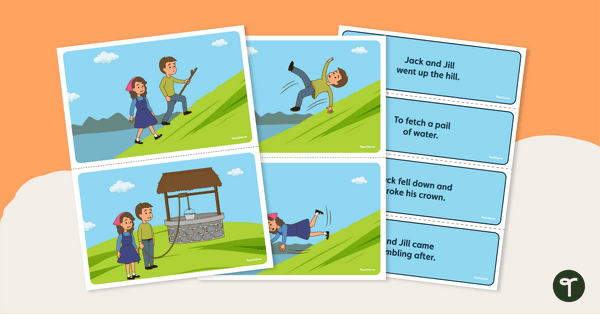
Jack and Jill Retelling Activity Cards
Teach your students about retelling with this set of sequencing cards for Jack and Jill.
- Plus Plan
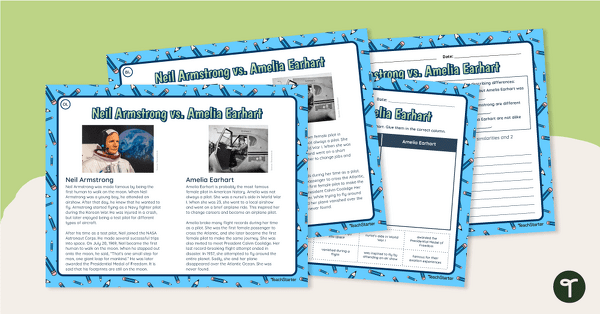
Compare and Contrast Worksheets - Neil Armstrong vs. Amelia Earhart
Compare and contrast Neil Armstrong and Amelia Earhart with differentiated reading comprehension worksheets.
- Plus Plan
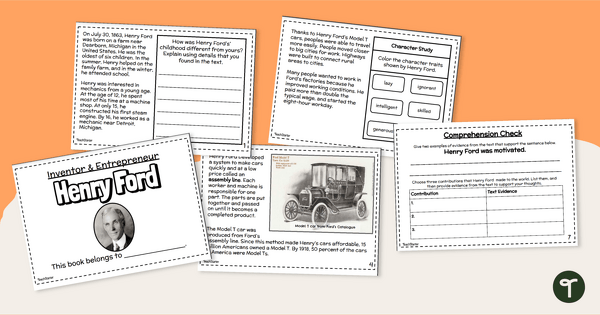
Henry Ford Mini Book - Famous Inventor Activity
Provide students with cross-curricular history, science and reading instruction with a printable Henry Ford mini book.
- Plus Plan

Story Elements Worksheets – The Fox and the Grapes
Practise identifying the story characters, settings and main events with this set of worksheets based on a traditional tale.
- Plus Plan

Who Is the Main Character? Worksheets
Practise identifying the main characters in nursery rhymes with this set of worksheets for young learners.
- Plus Plan
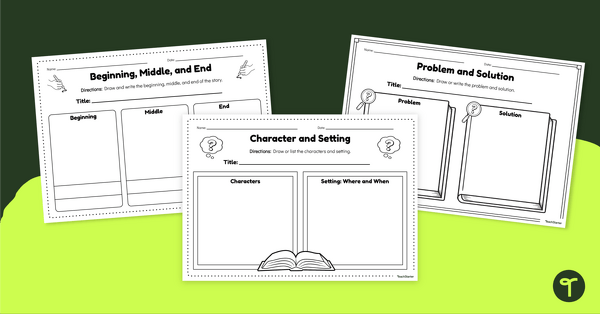
Narrative Elements Graphic Organisers – Landscape
Encourage your students to write and draw about various story elements with this set of differentiated graphic organisers.
- Plus Plan
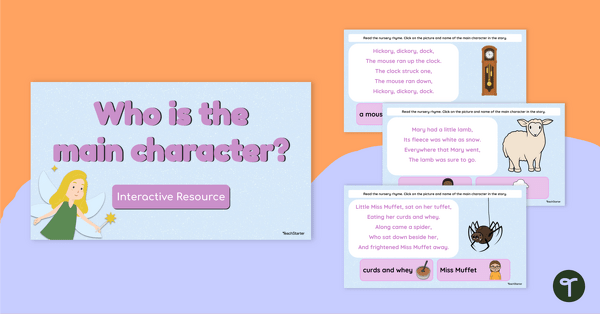
Who Is the Main Character? Interactive Game
Practise identifying the main characters in nursery rhymes with this interactive digital activity.
- Plus Plan
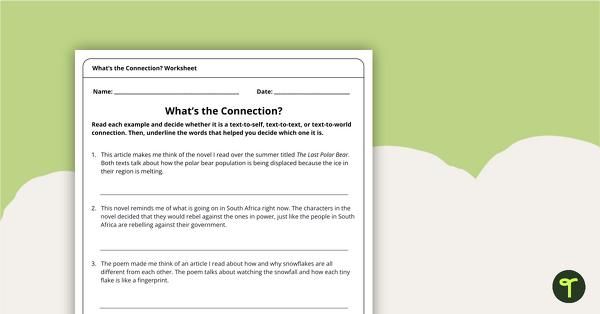
What's the Connection? Worksheet
Use this reading skills worksheet to help your students learn about the types of text connections: text-to-text, text-to-self and text-to-world.
- Plus Plan
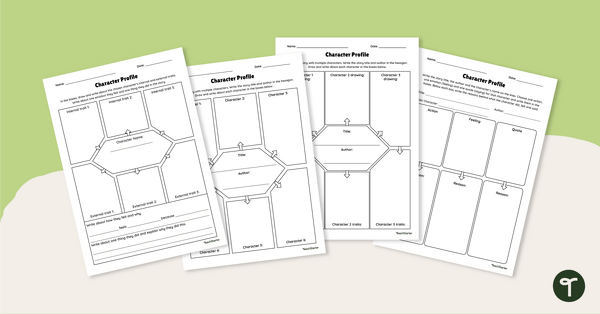
Character Profile - Graphic Organisers
Explore the internal and external traits of story characters with a set of differentiated graphic organisers.
- Plus Plan
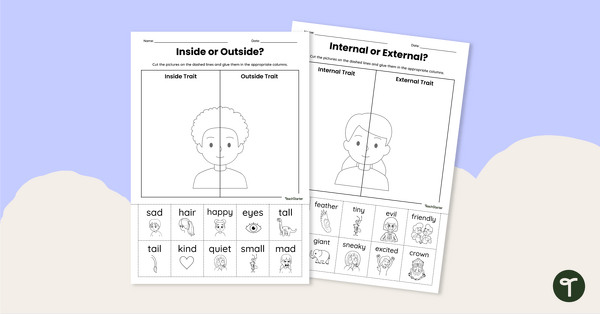
Internal and External Character Traits - Cut and Paste Worksheet
Explore the internal and external traits of story characters with this differentiated cut-and-paste worksheet.
- Plus Plan
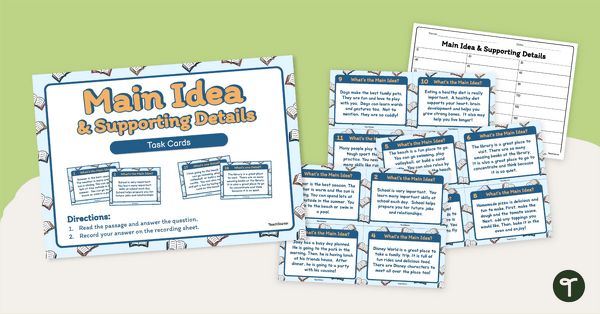
Main Idea Task Cards
Practise finding the main idea and supporting detail in a passage with these task cards.
- Plus Plan
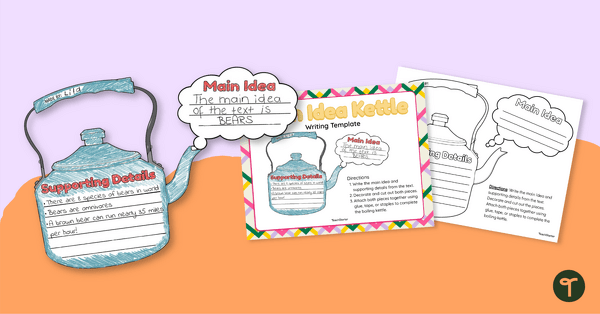
Main Idea Kettle Writing Template
Create a cute kettle template to help students understands the main idea and supporting detail while reading.
- Plus Plan
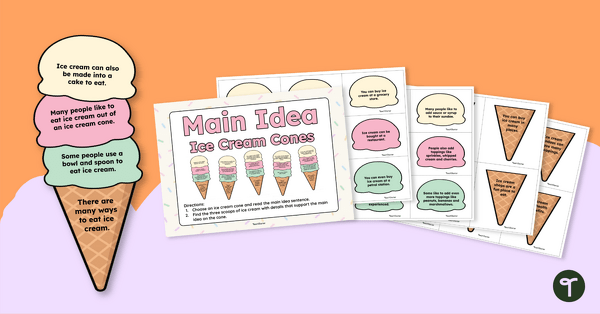
Main Idea Ice Cream Cones Sorting Activity
Practise distinguishing the main idea and the supporting detail with this fun ice cream sorting activity.
- Plus Plan
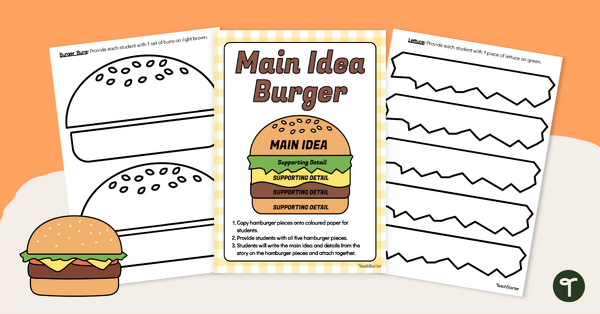
Main Idea and Details Burger Template
Consolidate knowledge of the main idea and supporting detail with this main idea hamburger template.
- Plus Plan
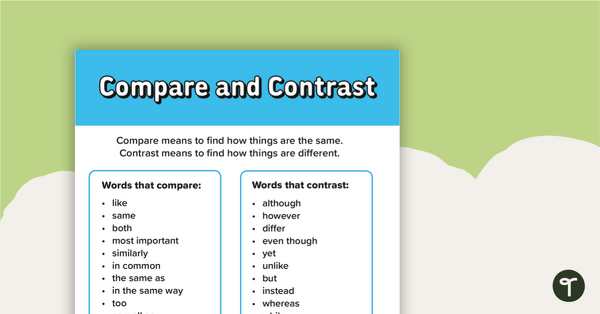
Compare and Contrast Poster
A poster highlighting how to compare and contrast when reading a piece of text.
- Plus Plan
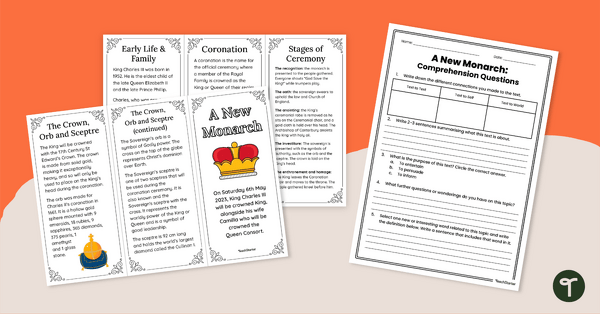
A New Monarch: Brochure and Comprehension Task
Learn about the coronation process and King Charles III with this informative brochure and comprehension task.
- Plus Plan
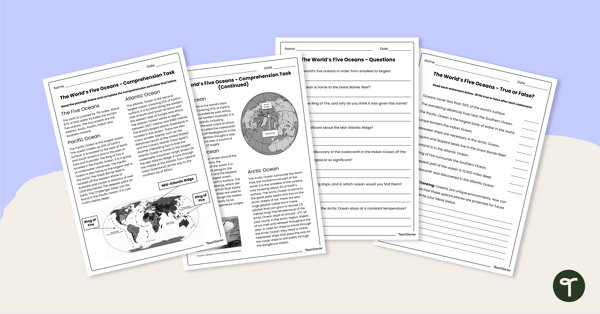
The World's Oceans - Comprehension Worksheet
Explore the world’s five oceans with this detailed comprehension passage and related questions.
- Plus Plan

National Tree Day – Why Plant a Tree? Infographic Analysis Activity
Teach about the importance of trees on National Tree Day with an infographic poster and cloze note-taking worksheet.
- Plus Plan
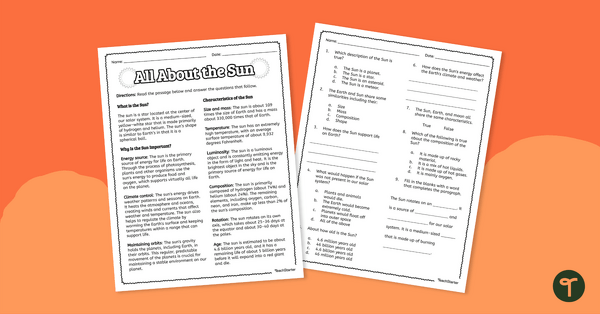
All About the Sun – Comprehension Worksheet
Integrate science and reading while learning about the Sun with this comprehension worksheet.
- Plus Plan
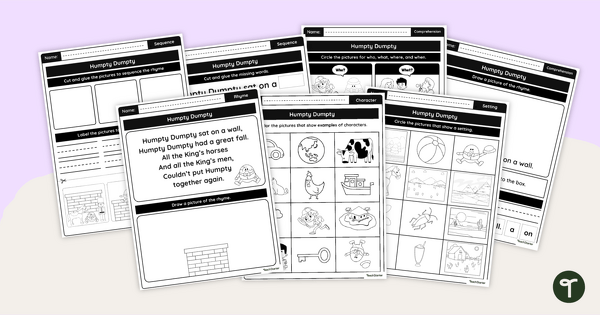
Narrative Features Worksheets - Humpty Dumpty
Identify characters, settings and parts of a story with early years reading worksheets featuring the Humpty Dumpty nursery rhyme.
- Plus Plan
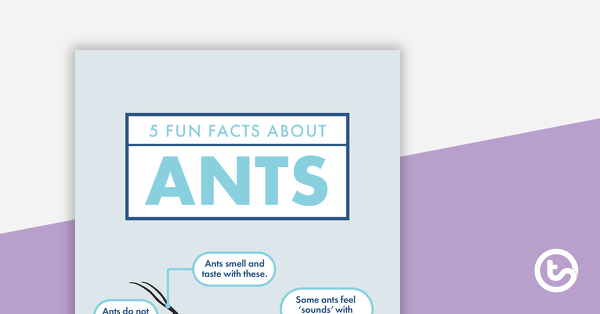
5 Fun Facts About Ants - Read and Respond Worksheet
A '5 fun facts ...' information sheet and worksheet.
- Plus Plan
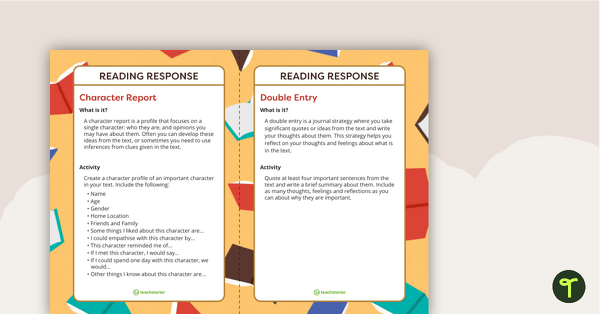
Reading Response Journal Task Cards
9 reading comprehension task cards focusing on a different skill.
- Plus Plan
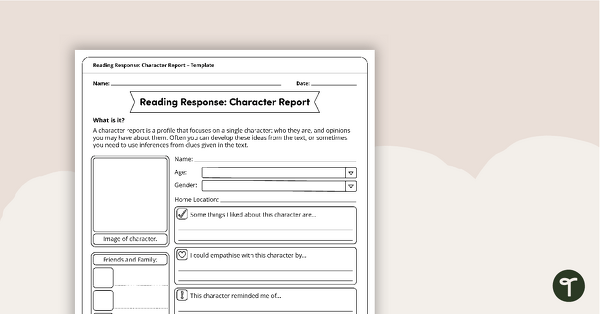
Reading Response Character Report – Template
A comprehension template for students to write a character report about the text they have been reading.
- Plus Plan
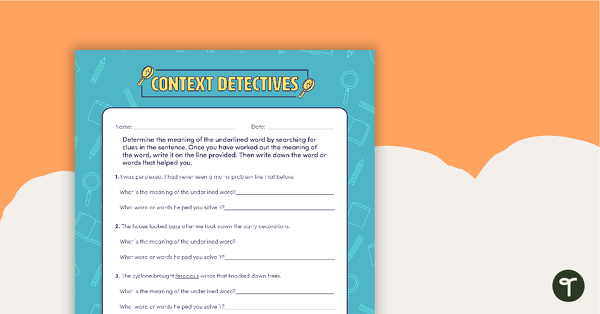
Context Detectives Worksheet
A set of 3 worksheets for students to practise using context clues to identify the meaning of a word.
- Plus Plan
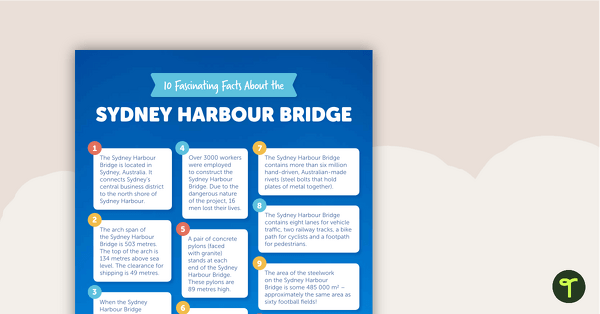
10 Fascinating Facts About the Sydney Harbour Bridge – Comprehension Worksheet
A comprehension worksheet for an article including ten facts about the Sydney Harbour Bridge in Australia.
- Plus Plan
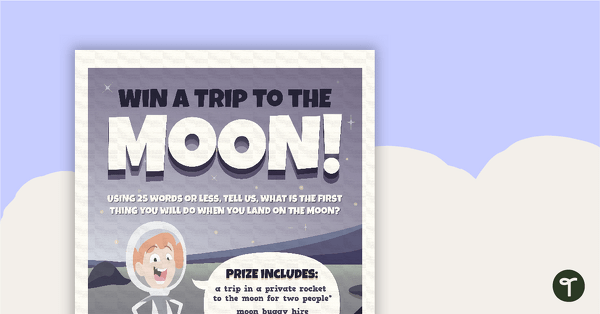
Win a Trip to the Moon – Worksheet
A comprehension worksheet for a fake advertisement from the Year 1 magazine (Issue 3).
- Plus Plan
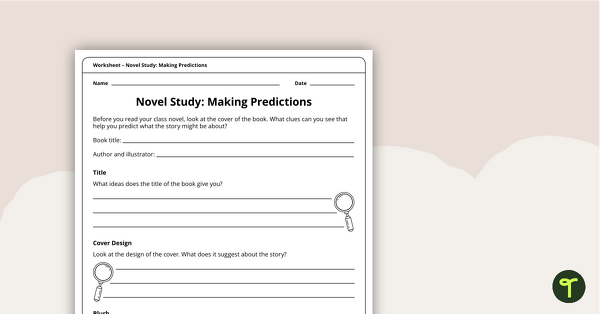
Novel Study – Making Predictions Worksheet
Make predictions before reading a novel with this novel study worksheet.
- Plus Plan
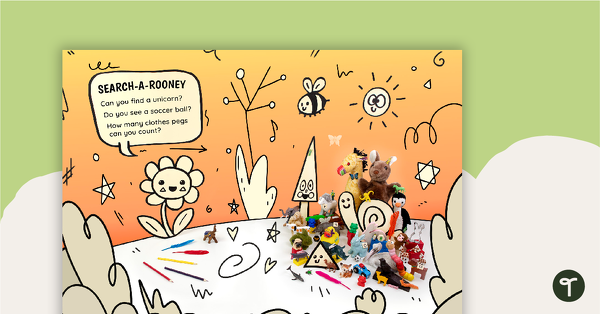
Search-a-Rooney 2 – Comprehension Worksheet
A comprehension worksheet for a image stimulus poster where students need to locate objects and characters.
- Plus Plan
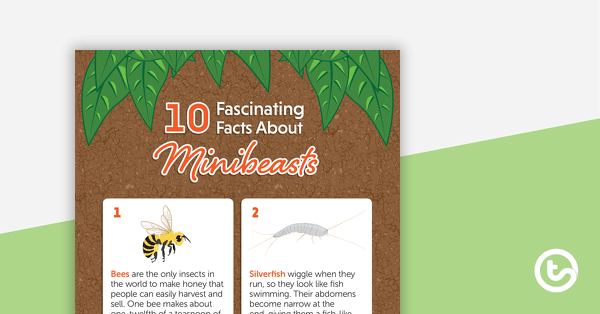
10 Fascinating Facts About Minibeasts – Worksheet
A comprehension worksheet for a fascinating facts article from the Year 2 magazine (Issue 2).
- Plus Plan
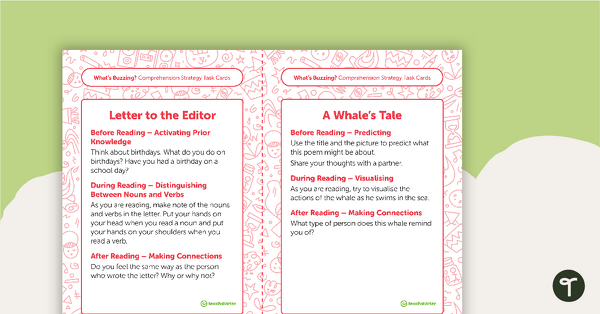
Year 1 Magazine - "What's Buzzing?" (Issue 2) Task Cards
A set of five literacy rotation task cards to be used in conjunction with Issue 2 of Teach Starter’s Year 1 magazine.
- Plus Plan
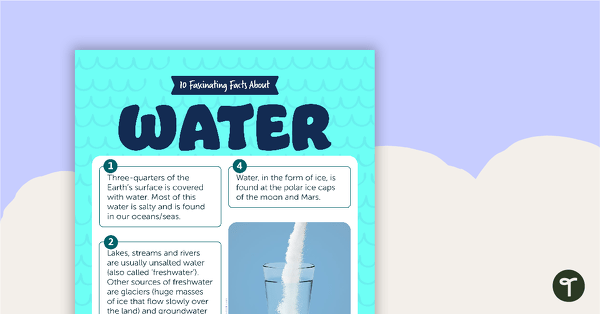
10 Fascinating Facts About Water – Worksheet
A comprehension worksheet for a magazine article from the Year 2 magazine (Issue 3).
- Plus Plan
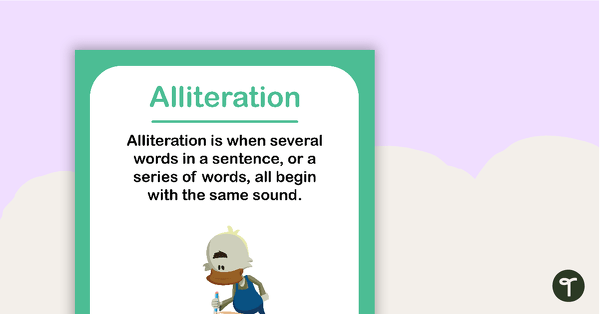
Alliteration Poster For Young Students
A poster to use with young students when teaching alliteration.
- Reading Comprehension Worksheets
- Reading Comprehension Templates
- Reading Comprehension Posters
- Reading Comprehension Teaching Presentations
- Reading Comprehension Games
- Reading Comprehension for Foundation Year
- Reading Comprehension for Year 1
- Reading Comprehension for Year 2
- Reading Comprehension for Year 3
- Reading Comprehension for Year 4
- Reading Comprehension for Year 5
- Reading Comprehension for Year 6
- Reading Comprehension for Year 7